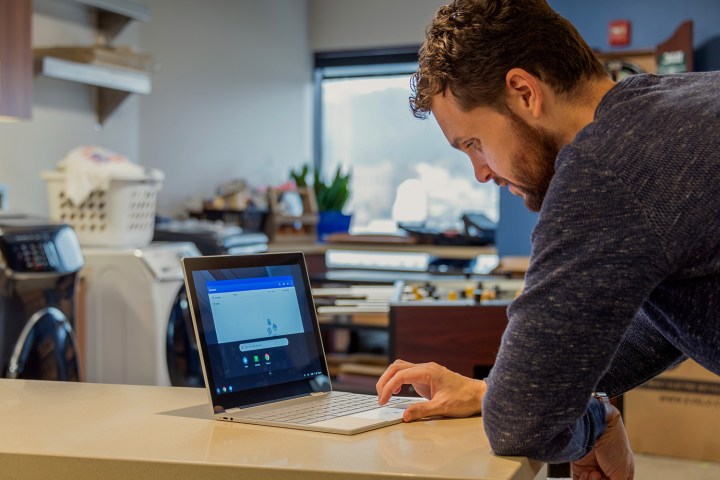
Google has stitched Android and Chrome OS together with scissors, glue, and tape.
Now, six years later, Google has introduced the Pixelbook. It’s a beautiful 2-in-1 that seems confused about why it exists. On the outside, it’s a product that screams “MacBook competitor,” accompanied by a $1,000 price point and snazzy design pulled from the Pixel smartphones.
The Pixelbook isn’t targeting the same audience other Chromebooks are. Like Apple and Microsoft, Google wants people to buy the Pixelbook not just because they need a computer, but because they want a Google product. There’s nothing wrong with that. In fact, that same mindset led to the iPhone and the Surface Pro, devices that altered the future of computing.
Unfortunately, the Pixelbook is not as revolutionary.
The messy mash-up
Before the Pixelbook’s announcement, we were sure the next laptop made by Google would integrate
However, it only takes a few minutes of using the Pixelbook to realize the problem inherent in its existence. With the Pixelbook, Google has stitched
Google Assistant and the Pixelbook Pen make the problem worse, not better. They highlight the messy melding of the two operating systems, and make the user experience downright confusing. It’s hard to predict what’ll happen when you touch the screen with the Pen, or summon Google Assistant. The response can depend on what you’re using, and doesn’t inspire the confidence. The Chrome browser doesn’t work well with the pen, but
Google, pick a direction – and stick with it
Rumor have circulated about a new Google operating system, code-named Andromeda, that’s meant to combine
Now, the rumors have changed, and suggest Google’s working on a new operating system known internally as Fuchsia. Nothing is official yet, but we do know it ditches the Linux-microkernel that Chrome OS is based on in favor of a new, homebrewed microkernel called Magenta. According to Google documentation, Magenta is made for “modern phones and modern personal computers with fast processors, non-trivial amounts of RAM, with arbitrary peripherals doing open-ended computation.”
Whatever Fuchsia’s capabilities, Google must decide the type of company it wants to be. If it wants to continue as the open-source, affordable alternative to Apple and Microsoft, it should stop trying to sell $1,000 Chromebooks. If it wants to be a serious competitor in the laptop and 2-in-1 space, it’s time for the company to build a decisive, fully-baked solution to the awkward gap between
Until then, the Pixelbook – and all other premium Chromebooks – will feel like prototypes shoved out the door too soon.
Editors' Recommendations
- The Pixelbook dream may finally be gone for good
- Your Chromebook now has access to your Android phone’s photos
- Google teases a true video editor for its Chromebooks
- Chrome OS to soon run everywhere, including on PCs and Macs
- Chromebooks finally feature an improved Android app experience



